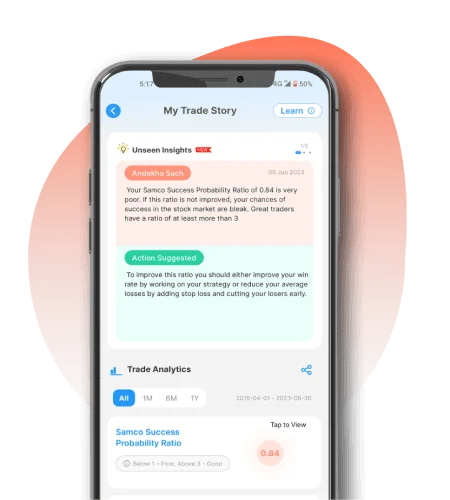Introduction
In the ever-evolving world of financial markets, investors are presented with a wide array of trading opportunities. Two of the most prominent avenues are commodity trading and equity trading. While both offer ways to grow wealth, they differ significantly in structure, purpose, and risk profile.
This blog aims to help investors understand the key differences, advantages, and potential risks involved in both types of trading. Whether you're an active trader or a long-term investor, knowing how each market operates is crucial in building a robust and diversified portfolio.
Understanding the mechanics of commodity vs equity trading not only helps in risk management but also in making informed decisions aligned with your financial goals. With global markets becoming more accessible, the ability to navigate both asset classes gives investors an edge in creating a balanced investment strategy.
Understanding Commodity Trading
Commodity trading involves buying and selling raw materials or primary goods. These goods are often classified into four categories:
- Precious metals: Gold, silver, platinum
- Energy: Crude oil, natural gas
- Agricultural products: Wheat, corn, cotton
- Industrial metals: Copper, aluminium
Commodities are typically traded through spot markets and futures contracts. Spot trading involves immediate settlement, whereas futures allow traders to speculate on price movements at a future date. The most active platforms for commodity trading include the MCX (India), CME Group, and ICE (Intercontinental Exchange).
Commodities play an essential role in portfolio diversification. Since their prices often move independently of stocks and bonds, they act as a hedge against inflation and currency fluctuations.
Popular commodities like gold and crude oil are heavily influenced by global demand-supply dynamics, geopolitical tensions, and economic indicators. For example, a disruption in oil supply due to war or sanctions can lead to sharp price increases.
Pros:
- Hedge against inflation
- High returns during global crises
- Diversification benefits
Cons:
- High volatility and speculative risks
- Seasonal and geopolitical influences
- Requires domain-specific knowledge
Understanding Equity Trading
Equity trading refers to the buying and selling of company shares through stock exchanges. Investors become part-owners of the company and benefit from capital appreciation and dividend income.
Equities are traded on platforms like the NSE and BSE in India, NYSE, and NASDAQ globally. Unlike commodities, equities represent ownership in businesses, and the value of a stock is linked to company performance, management, sector outlook, and broader market sentiment.
For most retail investors, equities serve as a long-term investment tool. They offer the potential for consistent growth, especially when invested in fundamentally strong and well-governed companies.
Examples of popular stocks include Reliance Industries, Apple Inc., and Tata Consultancy Services.
Pros:
- Potential for long-term wealth creation
- Dividend income from profitable companies
- Regulatory transparency and company disclosures
Cons:
- Vulnerable to market downturns
- Prone to sentiment-driven price swings
- Business-specific risks such as debt or poor governance
Key Differences between Commodity and Equity Trading
Understanding the differences between commodity and equity trading is crucial for investors looking to diversify their portfolios. While both are active forms of trading in financial markets, they differ in terms of market structure, risk exposure, time horizon, and capital dynamics.
- Market Type:
Equity trading involves buying and selling shares of publicly listed companies. When you buy a stock, you essentially purchase a small ownership stake in a business, and your returns depend on the company’s performance, growth prospects, and market sentiment. In contrast, commodity trading deals with tangible physical assets such as gold, crude oil, natural gas, or agricultural goods. Commodities are traded through spot markets or derivatives like futures contracts and are often used to hedge inflation or global uncertainty. - Risk Levels:
The commodity market is inherently more volatile due to its sensitivity to external shocks. Prices can swing sharply based on geopolitical tensions, weather conditions, or global supply-demand dynamics. For example, a drought can spike wheat prices, while a conflict in the Middle East can disrupt oil supply. On the other hand, equities tend to exhibit more stable growth patterns, although they too are affected by economic cycles and investor sentiment. - Investment Timeframes:
Commodity trading is often short-term and speculative in nature, with many traders leveraging futures contracts to profit from price movements over days or weeks. Equity investments, especially in fundamentally strong companies, are more aligned with long-term wealth creation. Investors often hold stocks for years to benefit from capital appreciation and dividends. - Capital Requirement:
Trading in commodities usually requires higher margin amounts due to leverage and contract-based trading. A small price movement in commodities can translate into significant gains or losses, making it a high-risk, high-reward segment. Equity trading, meanwhile, offers flexibility in capital deployment, with options like SIPs (Systematic Investment Plans) and fractional investing in some markets. - Liquidity and Trading Hours:
Equity markets are typically more liquid, especially for large-cap stocks, enabling easier entry and exit. Commodity markets, although liquid in major contracts, often have limited trading hours and may lack depth in less popular segments. - Volatility and External Influences:
Commodity prices are heavily influenced by macro factors like global inventories, trade policies, and natural events. Equities, in contrast, are driven by company fundamentals, earnings, interest rates, and broader market trends.
In essence, while both markets offer profit opportunities, the approach and risk profile differ significantly.
Pros and Cons of Commodity Trading
Advantages:
- Acts as a hedge against currency devaluation and inflation
- Offers diversification, especially during stock market downturns
- Potential for quick profits in volatile markets
- High leverage allows for greater exposure with less capital
Disadvantages:
- Extremely volatile, leading to higher risk of losses
- Seasonal trends and weather disruptions affect agricultural commodities
- Requires close monitoring and domain expertise
- Regulatory changes can impact pricing or trade limits
Pros and Cons of Equity Trading
Advantages:
- Opportunity for long-term capital appreciation
- Stocks may offer dividends, adding to total returns
- Well-regulated markets with accessible data and transparency
- Suitable for systematic investment via SIPs or portfolio strategies
Disadvantages:
- Market corrections can erode value quickly
- Company-specific issues (e.g., poor governance) can hurt stock performance
- Emotional decision-making may lead to panic selling
- Some sectors may show slow or no growth for extended periods
Which Trading Type is Right for You?
Choosing between commodity and equity trading depends on your risk appetite, investment goals, and time commitment.
If you have a high risk tolerance and are comfortable with market volatility, commodity trading may appeal to you. It's suited for active traders who can monitor short-term trends and global events closely.
On the other hand, equity trading is ideal for those with long-term wealth-building goals, such as retirement planning or asset accumulation. It offers more stability and allows for passive income through dividends.
You don’t necessarily have to choose one. Many investors combine both in their portfolios to balance risk and reward. A mixed approach offers the opportunity to capitalize on short-term commodity movements while building long-term wealth through equities.
Conclusion
Both commodity and equity trading serve valuable roles in an investor’s portfolio. While commodities offer a hedge and trading opportunities in volatile times, equities provide long-term growth and stability.
Ultimately, your choice should depend on your investment horizon, risk profile, and financial objectives. A well-thought-out strategy possibly including both asset classes can lead to a more resilient and rewarding portfolio.
If you're new to trading, consider seeking professional guidance or exploring reliable platforms like Samco to get started with smart tools and learning resources.








 Easy & quick
Easy & quick